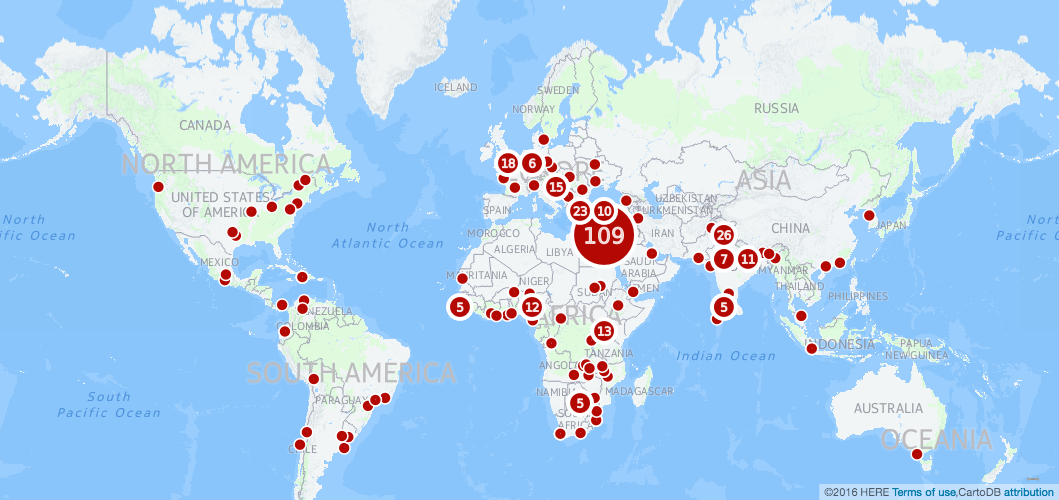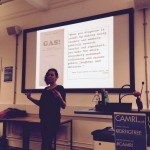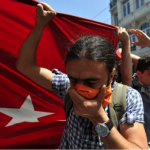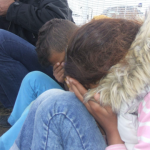Check out the interactive maps on our BU Civic Media Hub website to find out!
Everyday tear gas is used around the world, from Brazil to Bahrain, from Thailand to the Occupied Territories of Palestine. Yet, while journalists file news stories of tear gas deployments, there is no national or international data recorded on its use or its effects.
Researchers and campaign groups work hard to raise awareness of the true effects of tear gas, yet its health effects remain undetermined and its death toll ill-defined. Data on tear gas is dispersed across nations, suppressed by governments, and spun by corporate manufacturers with a vested interest in keeping sales figures high. Largely unregulated and unmonitored, the for-profit transnational trade in tear gas continues to raise legal questions, as people around the world face its repressive and often violent effects.
Our 2015 Mapping the Media project sought to aggregate news reports on tear gassing in efforts to make public the frequency and motivations for its use. The maps form part of a larger research project led by Dr. Anna Feigenbaum, Senior Lecturer in Digital Storytelling at Bournemouth University. The 2015 mapping was done by Dr. Feigenbaum and her Undergraduate Research Assistant (URA) Laura McKenna with support from Dr. Pippa Gillingham and the BU Datalabs Team that came together through CCCP Fusion Grant in 2014.

Find out more about digital storytelling for impact from Dr. Feigenbaum’s blog post on the topic.
 Taking Tear Gas on Tour
Taking Tear Gas on Tour BU Civic Media Hub & the Omega Research Foundation publish report on the misuse of Tear Gas in Europe
BU Civic Media Hub & the Omega Research Foundation publish report on the misuse of Tear Gas in Europe Civic Media Hack Day: Human Rights and Policing
Civic Media Hack Day: Human Rights and Policing










 Fourth INRC Symposium: From Clinical Applications to Neuro-Inspired Computation
Fourth INRC Symposium: From Clinical Applications to Neuro-Inspired Computation Writing policy briefs
Writing policy briefs Upholding Excellence: The Concordat to Support Research Integrity
Upholding Excellence: The Concordat to Support Research Integrity Today’s Documentation Will Serve Tomorrow’s Justice
Today’s Documentation Will Serve Tomorrow’s Justice ECR Funding Open Call: Research Culture & Community Grant – Application Deadline Friday 12 December
ECR Funding Open Call: Research Culture & Community Grant – Application Deadline Friday 12 December MSCA Postdoctoral Fellowships 2025 Call
MSCA Postdoctoral Fellowships 2025 Call ERC Advanced Grant 2025 Webinar
ERC Advanced Grant 2025 Webinar Horizon Europe Work Programme 2025 Published
Horizon Europe Work Programme 2025 Published Horizon Europe 2025 Work Programme pre-Published
Horizon Europe 2025 Work Programme pre-Published Update on UKRO services
Update on UKRO services European research project exploring use of ‘virtual twins’ to better manage metabolic associated fatty liver disease
European research project exploring use of ‘virtual twins’ to better manage metabolic associated fatty liver disease